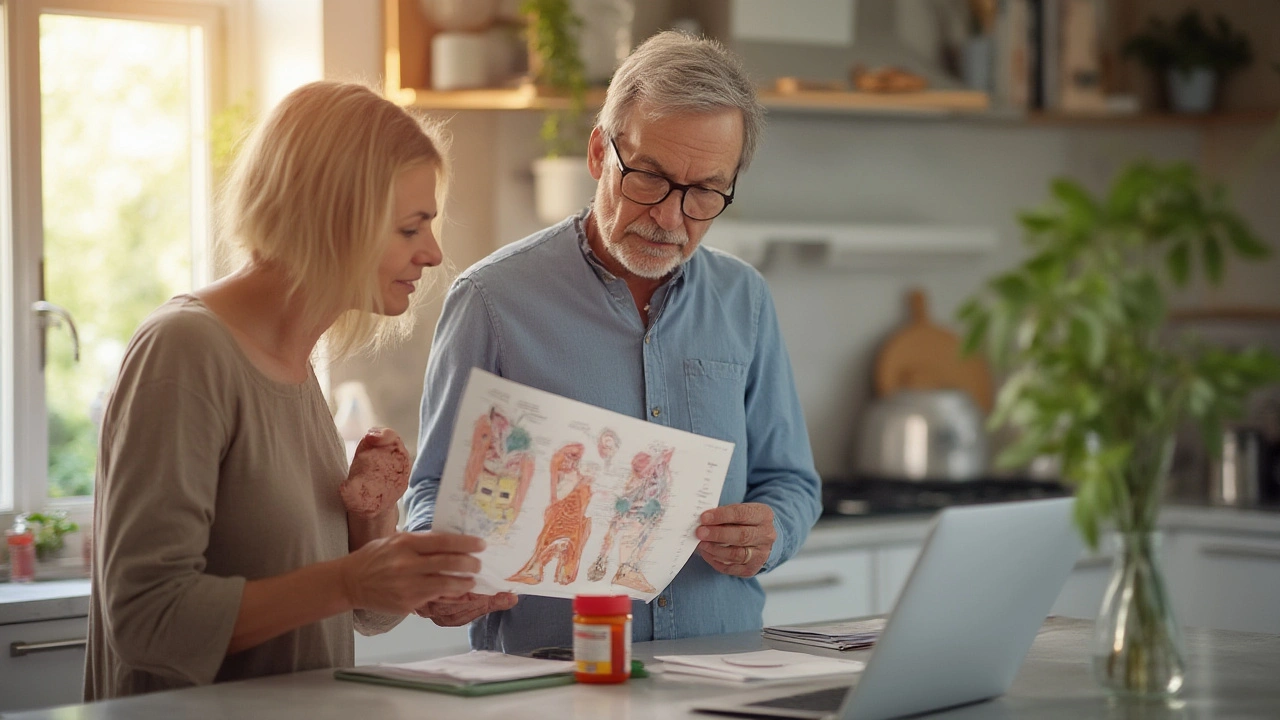Osteoporosis: What It Is and How to Keep Your Bones Strong
Osteoporosis is a condition where bones become porous and fragile, making even a minor fall risky. It doesn’t show up on an X‑ray until a break happens, so many people walk around with it unknowingly. Knowing the signs and taking simple steps now can save you from painful fractures later.
Why Bones Lose Strength
Age is the biggest culprit, but hormones, lack of calcium, and a sedentary lifestyle speed up bone loss. Women lose bone density fast after menopause because estrogen drops, while men see a slower decline. Smoking, heavy drinking, and certain meds—like steroids—also chip away at bone quality.
Another hidden factor is vitamin D deficiency. Without enough vitamin D, your body can’t absorb calcium, no matter how much you eat. A quick blood test can tell you if you’re low, and a short supplement can fix it.
Practical Ways to Protect Your Bones
Eat calcium‑rich foods every day. Dairy, leafy greens, and fortified plant milks give you the 1,000 mg most adults need. Pair calcium with vitamin D—think fatty fish, egg yolks, or a 600‑800 IU supplement—to boost absorption.
Weight‑bearing exercise is a game‑changer. Walking, dancing, or light jogging puts gentle stress on bones, prompting them to rebuild. Aim for 30 minutes most days, and add two strength‑training sessions a week to target hips and spine.
If you smoke, quit. Cut alcohol to no more than two drinks a day. Both habits improve overall health and keep your bone remodeling process balanced.
Talk to a doctor about a bone density scan once you hit 65, or earlier if you have risk factors. The test is painless and tells you exactly how much bone you’ve lost. If the scan shows osteoporosis, medications like bisphosphonates can slow down the loss and even rebuild bone over time.
Don’t ignore pain in the back, hips, or wrists—these can signal a hidden fracture. Early treatment means quicker recovery and less chance of future breaks.
Finally, make your home safer. Remove loose rugs, install grab bars, and keep lighting bright. Simple changes reduce fall risk, which is the most common way osteoporosis leads to a fracture.
By staying aware of risk factors, eating the right foods, staying active, and getting regular check‑ups, you can keep your skeleton sturdy well into old age. Osteoporosis isn’t inevitable—small daily choices add up to big protection.
Midodrine and Osteoporosis: Exploring Risks, Effects, and Prevention Tips
Discover how midodrine influences osteoporosis risk, impacts bone health, and what you can do to keep your bones strong if you use this medication.
